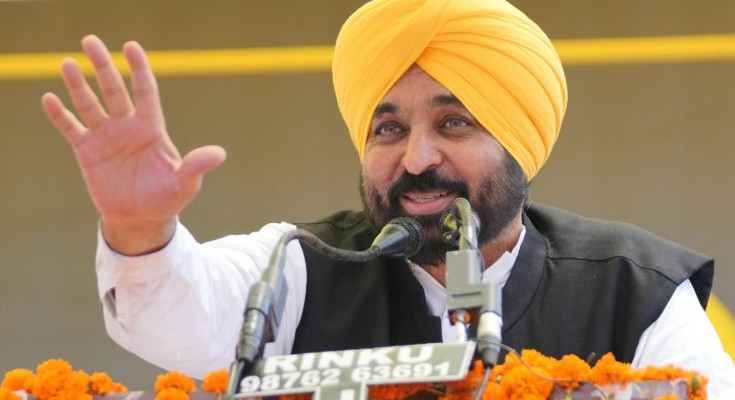A storm of controversy has erupted in Punjab, as a prominent voice of the Punjabi diaspora has vehemently condemned the state government’s ambitious, yet contentious, plans for extensive land acquisition around Ludhiana. The North American Punjabi Association (NAPA), a vocal advocate for the Punjabi community across the United States, Canada, and the United Kingdom, issued a sharp denouncement on Saturday, May 24, 2025, accusing the Aam Aadmi Party (AAP)-led government of posing a “catastrophic threat” to the livelihoods of thousands of farmers and the delicate ecological balance of one of Punjab’s most fertile agricultural belts. This pointed rebuke from overseas underscores the deep-seated anxieties among global Punjabis regarding policies that directly impact their ancestral homeland and its cherished agrarian heartland.
NAPA, an organization with a history of actively engaging with issues pertinent to Punjab, has consistently championed various causes, ranging from advocating for the rights of Non-Resident Indians (NRIs) to demanding justice for historical grievances. Their forceful intervention in this latest land acquisition matter stems from what they perceive as a moral and familial obligation to protect the interests of the farming community.
For a significant portion of the Punjabi diaspora, land transcends its mere economic value; it embodies a profound cultural identity, represents a generational legacy passed down through families, and constitutes the very essence of Punjabiyat. Consequently, any governmental policy perceived as threatening this fundamental connection to the land inevitably elicits a strong and unified response from communities living thousands of miles away.
The specific governmental action that has drawn the diaspora’s fierce ire is the Punjab government’s recent decision, approved by the state Cabinet, to acquire a staggering 24,311 acres of agricultural land primarily surrounding Ludhiana. This colossal undertaking, spearheaded by the Greater Ludhiana Area Development Authority (GLADA), is earmarked for the development of sprawling urban estates, modern infrastructure, and potentially new industrial zones within a roughly one-kilometer radius of the rapidly expanding city.

While the government frames this as an indispensable step for planned urban development, fostering economic growth, and attracting much-needed investment, the sheer magnitude of the proposed acquisition—impacting over 150 villages and an estimated 50,000 farming families in Ludhiana district alone, with additional villages in Moga, Ferozepur, and Nawanshahr districts also affected—has triggered widespread alarm and fervent resistance. The land in question is unequivocally prime agricultural land, historically contributing significantly to Punjab’s robust agricultural output and, by extension, playing a crucial role in India’s overall food security.
Satnam Singh Chahal, the Executive Director of NAPA, articulated the Punjabi diaspora’s profound dismay and demanded an immediate and unconditional withdrawal of the controversial proposal. Chahal starkly warned that the move to acquire nearly all farmland within such close proximity to Ludhiana, a region celebrated for its unparalleled agricultural productivity, poses an existential threat to the livelihoods of thousands of farmers who have depended on these ancestral lands for generations.
He forcefully highlighted that the current market value of agricultural land in these affected villages ranges between a staggering ₹5 crore and ₹10 crore per acre. He contended that once dispossessed, these farmers would be left with virtually no viable economic alternatives to sustain themselves. The prevalent fear is that the compensation eventually offered by the government, even if legally compliant with current regulations, would prove woefully insufficient to enable these displaced farmers to purchase comparable fertile land elsewhere, thereby effectively rendering these families landless and pushing them into severe economic precarity.
NAPA’s scathing criticism extends far beyond mere economic displacement, encompassing serious allegations regarding a fundamental lack of transparency, glaring deficiencies in due process, and profound concerns about the broader ecological ramifications of such a massive undertaking. Chahal alleged an “alarming disconnect between the AAP leadership and the rural backbone of Punjab,” suggesting that the decision to acquire this vast land was influenced by undisclosed vested interests.
He further implicitly implicated Punjab Finance Minister Harpal Singh Cheema in influencing the decision, though without providing specific evidence for the latter claim. The diaspora body estimates that the overall economic fallout from this large-scale land acquisition could potentially exceed ₹2 trillion, branding it “one of the largest forced land transfers in recent memory” within Punjab. They contend that Punjab is already grappling with the adverse consequences of rapid and often unchecked urbanization, and this extensive land grab will only serve to deepen the existing ecological crisis, gravely impacting crucial groundwater tables, compromising long-term soil health, and irrevocably damaging agricultural biodiversity. The core accusation from NAPA is that the government is prioritizing the narrow interests of urban expansion and potentially corporate development over the imperative of sustainable development and the environmental integrity of the state.
The concerns vociferously voiced by NAPA resonate profoundly with the strong and unified protests that have already gained considerable momentum on the ground within Punjab. Local resistance to the land acquisition proposal has been escalating steadily, with powerful farmer organizations such as the Samyukta Kisan Morcha (SKM) and Bhartiya Kisan Union (Dakaunda) actively mobilizing affected villagers.
Farmers from nearly 30 villages recently converged for a large gathering in Bhanohar, expressing their fierce and collective opposition and meticulously planning future courses of action to compel the government to withdraw the controversial notification. Major political parties, including the Shiromani Akali Dal (SAD) and the Congress, have also vocally rallied behind the aggrieved farmers, with SAD president Sukhbir Singh Badal announcing a significant protest outside the GLADA office in Ludhiana on May 29. These widespread local agitations, coupled with the diaspora’s authoritative condemnation, collectively exert immense and sustained pressure on the Punjab government, painting a vivid picture of widespread dissent against the ambitious land acquisition plan.
For the Punjab government, under the leadership of Chief Minister Bhagwant Mann, this unfolding controversy presents a significant and multifaceted challenge. The administration’s consistently stated objective behind such initiatives is to fundamentally transform Punjab’s economic landscape by attracting large-scale industrial investments and fostering robust economic growth, for which the establishment of well-defined land banks is deemed strategically essential. Finance Minister Harpal Singh Cheema has previously vigorously defended the government’s land pooling policy, describing it as “100 percent voluntary” and asserting that it is designed to empower landowners by offering them significantly higher returns than traditional, often coercive, land acquisition methods, potentially yielding up to a remarkable 400 percent appreciation through developed residential and commercial plots.
The government also explicitly aims to provide modern and comprehensive infrastructure, including meticulously planned roads, advanced sewerage systems, reliable water supply, efficient drainage, and consistent electricity, on these developed plots. However, the pervasive lack of concrete clarity regarding the exact location, specific size, and precise development timelines for these promised alternate plots, combined with the immediate and tangible loss of income from active farming, has rendered many villagers deeply distrustful and skeptical of the government’s assurances. A significant number of farmers fear being rendered landless or left in an agonizing state of limbo for many years, without any explicit provision to adequately compensate for the substantial agricultural income lost during the protracted interim period.
The larger context of land acquisition in India is inherently fraught with complexities and often precipitates widespread socio-economic challenges. Governments frequently find themselves performing a delicate balancing act, attempting to promote essential development and planned urbanization while simultaneously safeguarding the fundamental rights and preserving the traditional livelihoods of agrarian communities.
The allegations of insufficient and often tokenistic consultation, the conspicuous absence of clear and legally binding guarantees on the developed plots, and the perceived disregard for the traditional way of life are common criticisms consistently leveled against such large-scale development projects across the entire nation. In Punjab, these concerns are significantly magnified by the state’s deeply ingrained agricultural identity and the profound, often spiritual, emotional connection that generations of farmers have with their land. The active involvement of the diaspora further internationalizes this complex debate, bringing global scrutiny and raising international awareness of local governance practices and land policies.
In conclusion, the powerful condemnation emanating from the North American Punjabi Association regarding the Punjab government’s expansive land acquisition plans around Ludhiana marks a critical and defining juncture for the state. It starkly underscores the profound and escalating tension between the government’s ambitious aspirations for rapid economic modernization and the deeply rooted, historically significant agrarian realities of Punjab.
The unified voice of the diaspora, significantly amplified by the ongoing and intensifying local farmer protests, unequivocally demands a transparent, equitable, and genuinely sustainable approach to development that explicitly prioritizes the livelihoods, cultural heritage, and overall well-being of the farming community. The coming weeks will undoubtedly witness continued fervent debate and potentially even more intensified protests, as the Punjab government navigates this exceptionally sensitive issue. Its ultimate decisions on this matter are poised to profoundly impact the state’s delicate socio-economic fabric and its enduring, vital relationship with its expansive global diaspora.


